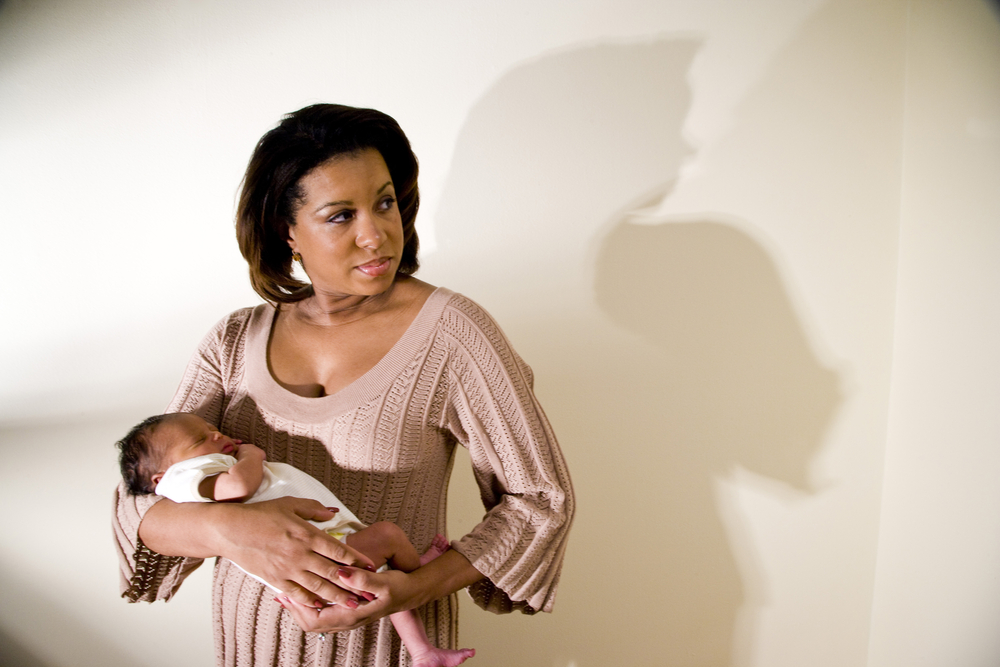You’ve been expecting for about 9 months. But do you really know what to expect when the big day arrives?
Your birth story may go something like this: ridiculously painful contractions every 4 minutes, you wondering when that anesthesiologist will show up to administer the epidural, and your partner telling you to breathe slowly and rubbing your lower back. Maybe you’ll find this soothing, or maybe you’ll want him to be quiet and stop touching you.
When the anesthesiologist finally shows up you’ll find that you’re willing to do anything – even sit in that “scared cat position with your back arched”.
Your labor will progress until you feel intense pressure which signals that the baby is ready to come and you need to start pushing. “Push from your tush” the labor nurse will tells you. So for 2 hours you do just that and finally your sweet and sort of cute wrinkly baby will come flying out…what a relief! The physical trauma is now over…or maybe not.
Postpartum: The Perfect Storm
Once your baby is born, you think your body has done all the hard work. So how come the postpartum period can sometimes feel like a perfect storm? The postpartum period officially starts once the baby is born and continues for 6 weeks. And while everyone talks about the lack of sleep and the new baby, many women spend that time finding that they were woefully unprepared for the reality of their post pregnancy body.
As I’m sure you’ve heard by now, many women experience tearing during vaginal deliveries. Don’t be shocked if you hear something like this from your doctor: “I have good news and I have bad news. The good news is the tear from the delivery did not go into your rectum. The bad news is there are two tears, one goes deep into the vagina and the other goes right under your urethra, the hole where the urine comes out.” After getting lidocaine injected (ouch!) into the vagina, the doctor will spend approximately 45 long minutes stitching you back together. Meanwhile, you’re getting to know your new baby and posing for pictures for Facebook. It’s all just a little overwhelming..
When the doctor is done, you may be tempted to ask her “how many stitches did you put in?” Don’t be surprised if she responds “it’s more like a sewing a hem-line” avoiding the question all together. The number of stiches isn’t important, what’s important is making sure you keep that blue glove that the nurse filled with icestrategically placed on your vagina. The granny panties that you now fashionably wear holds the ice pack in place perfectly. Most doctors recommend you change it every 3-4 hours for the first 24 hours. .
What your OB should have told you about the Perfect Storm
The postpartum period officially starts once the baby is born and continues for 6 weeks. And while everyone talks about the lack of sleep and the new baby, many women spend that time finding that they were woefully unprepared for the reality of their post pregnancy body.
1. Your vagina will never be the same.
Perhaps the first moment most women realize that they are in a postpartum state is during their first attempt to pee. Let’s be clear – it’s going to hurt when you pee for at least 24 hours after having a vaginal delivery. If you had a cesarean section this may not apply to you, however the Foley catheter that was in your bladder may create discomfort after it is removed. Once the numbness from the ice packs is over, you will feel the pain from the healing of your vagina repair. The extra tear that the doctor told you about near the urethra (hole where the urine comes out) burns when you urinate. Luckily, it does get better over the first 2 to 3 days but it’s a bit of a shocker at first.
2. Bleeding will be heavy, unpredictable and messy.
You are told to use ice on your bottom every 3-4 hours for the first 24 hours to help with the swelling. The ice pack helps, but you still have to deal with bleeding and blood clots from the vagina, and it can get messy. You won’t want to remove the ice pack for fear of feeling the stitches that the doctor put in. The huge sanitary napkins they gave you to collect all the blood really don’t work well together with the ice packs. As a result, your postpartum hospital bed is a complete mess. You may not want your husband or partner see this blood bath but trust me, it’s just part of the healing process. Everyone goes through it. The good news: vaginal bleeding is worst the first week after you deliver. Bad news: it typically lasts for 3-4 weeks.
3. Breast feeding is a challenge.
In the delivery room the nurse puts the baby on your breast and you pray that she latches onto your nipple. Once the baby looks like she is getting the hang of it it’s hard to get too excited because the simultaneous pain from the uterine cramping is toe curling. Plus, the pain from breast feeding itself is hard to get used to. Many times nipples become raw and blistered. And sadly, nipple cream doesn’t help ease the pain for most women. You so much want to be “that mom” that has no problem nursing and gives her baby a perfect head start in life. Just remember that breastfeeding for the first time is never easy for any new mom and with time, patience and support you can find the balance that works for you.
4. The nights are gonna get hot.
And sadly, not sexy hot. Within the first 48 hours it’s likely that you’ll begin to have intense sweats, typically at nighttime that can leave your pajamas drenched. The sweats occur as a result of your estrogen levels dropping and your prolactin increasing. This happens on a hormonal level to prepare your body for breastfeeding. The abrupt lowering of the body’s estrogen levels parallels what menopausal women go through when they have hot flashes. Luckily, it’s temporary but the effects on women are intense, dramatic and memorable. Even if you decide not to breastfeed, these hormonal cycles will still happen but to a lesser degree. As your milk supply dries up, your prolactin and estrogen levels begin to normalize.
5.Your vagina will need as much care as the baby.
Anyone who has had a vaginal delivery remembers the healing that takes place in the vagina. The first 24 hours you are less aware that you even have a vagina and rectum since it has been completely numb from the ice packs. And the full healing process of the damage done after a vaginal delivery generally takes 6-9 weeks.
It starts right after delivery.The first 24 hours you need to use ice to help with the swelling. Changing that ice pack every 3 hours for the first 24 hours is a must! “Yes!” a “cantaloupe” just shot out from your vagina so “yes”, there was trauma and “yes” there was tearing or cutting, and “yes” your doctor probably had to put some stitches. Luckily, these sutres dissolve on their own, generally in about a month. And you probably will never see them, even if you are bold enough to take a look down there with a mirror. (Thankfully your doctor hides them under your skin!)
After 24 hours of ice, you should switch to heat. That’s where a “sitz bath” comes in. It’s a hat-shaped contraption thatfits over the the toilet and you should insist on getting one when you are discharged from the hospital. Fill it with warm water and soak your bottom one or two times a day- especially after having a bowel movement. The warm water helps reduce the swelling and keeps the area clean. Some women like to use Epson salts in the warm water too. The first 2-4 weeks you need to sit down gently on your bottom not to disrupt the sutures placed in that area. Lidocaine spray may also ease the pain.
Have a question for one of our experts? Email support@helloflo.com.
6. You will still look pregnant for a while.
After you delivery your baby either by C/Section or vaginally, your abdomen, uterus and skin need time to get back to the pre-pregnant status. Immediately after delivery, the uterus will be at the level of your belly bottom, which is reminiscent of 20 weeks pregnant. By 6 weeks, the uterus is back to its normal size, which is the size and shape of a pear. Your skin is stretched and looks dry, rubbery and for some, covered with stretch marks. (You can thank your mom for those stretch marks since it is typically genetic.) It should not be a surprise that the shea butter that your might have religiously used on your belly didn’t work to prevent them from happening either. Allow yourself 9 months to have your body return to its pre-pregnant state. Those of you who get there faster are lucky but this is not typical. So set realistic expectations for yourself.
7. You might start peeing in your pants.
It’s not just your vagina, but your bladder also tends to be traumatized by a vaginal delivery. Losing urine when standing up, laughing, walking, or even lying in bed is common…very common! The good news is that it will improve over time but it is definitely one of those symptoms that is not talked about enough. If you had a C/Section you had a Foley catheter for 24 hours and you might experience some burning with urination during the first 24 to 48 hours. This is not due to a bladder infection. It is due to trauma to the urethra, a long narrow tube that drains your bladder, which is where the Foley had been placed.
8. A lot of us (80%) get the baby blues.
The exhilaration when you first hold your newborn in your arms is perfection for so many women. Once you hit the postpartum floor, the fog starts to set in and the physical discomforts and nuances blend well with the emotional upheaval. You think to yourself, “My mom did this 3 times”, “My best friend, Sarah, made it look so easy”. With these types of thoughts your fall deeper into despair since nothing is neither easy nor going well. Plus, you aren’t sleeping well, you’re having a lot pain, your partner isn’t being as helpful as you want him to be and you are frustrated! The first 3 months are challenging for all new moms. If anyone tells you differently they are not being honest. It’s so important that you get your rest, ask for help and know with time and patience things will get better.
9. It will take a while to get back into sex.
If you had a vaginal birth your vagina is finally healing from the trauma of the delivery at around 6 to 9 weeks. If you are breastfeeding, you are still in “postpartum menopause” which means you feel like you have no libido and your vagina may be dry. Sex is usually the last thing that you are interested in, but with patience, time and a good lubricant, it can feel enjoyable again. Ease back slowly into a sexual relationship with your husband or partner. Open conversations about what you are experiencing are helpful along with date nights that will allow you and your partner time to reconnect.
Here is my top 10 list of tips to help you through postpartum:
- Get your rest. Even if it means taking naps alongside your newborn.
- Drink plenty of liquids; at least 8 to 12 glasses of water or the equivalent a day.
- Do your Kegel exercises.
- Eat healthy, well balanced meals at regular intervals.
- Take daily walks with the baby for exercise.
- Don’t forget to take your prenatal vitamins, vitamin D and omega 3 fish oil.
- Communicate openly and honest with your partner.
- Use KY or another water-based lubricant during sex.
- Don’t be afraid to ask for help, especially from your family and friends.
- Be patient. Everyone who has ever had a baby has gone through the same experiences.
The postpartum period may be the least talked part of the pregnancy journey but knowing what to expect allows you to prepare yourself physically and mentally.
Cover image courtesy of Shutterstock.





comments